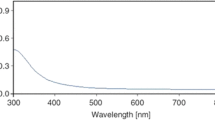Abstract
Poly(ε-caprolactone) (PCL) holds unique bioresorbability and competent biomechanical properties for tissue-engineering application. However, PCL is hydrophobic intrinsically and poor in cell-biomaterial interaction. In this study, we prepared a composite based on PCL and bioactive tantalum (Ta) to understand the effects of direct laser micropatterning on composite surface properties. The PCL/Ta composite after preparation was surface-patterned by femtosecond laser and characterized with surface morphology, crystal structure, chemical composition, wettability and cellular response of fibroblast. It was found that laser micropatterning enlarged the difference of wetting properties (∼15°) on PCL and PCL/Ta surfaces. The wetting changes was dependent on both material composition and laser-machined geometry. The blending of Ta enhanced surface wettability with prolonged contact time on the laser-machined line and rectangle microarrays. In vitro culture results showed beneficial effects of laser micropatterning on cell morphology of the fibroblasts. On the PCL/Ta surfaces with line and rectangle microarrays, the cells were more likely to bridge the sidewalls of the microgrooves, showing adaptive 3D morphologies to the micro/nano topographies on the sidewalls. These findings are envisaged to facilitate surface design and micropattern optimization for favorable tuning the cell response to biomedical PCL/Ta composites.
摘要
聚己内酯(PCL)具有良好的生物相容性、可降解性和优异的力学性能,广泛用于组织工程。然 而,PCL 的表面疏水性使生物蛋白附着困难。为了提升PCL 的表面性能,本文制备了钽(Ta)掺杂的 PCL复合薄膜(PCL/Ta),并采用飞秒激光直写技术在其表面制备微图案阵列。本文的材料表征手段包 括:表面形貌分析、物相结构分析、化学组分分析、润湿性能测试和成纤维细胞的生物活性测试。润 湿性测试结果表明:钽掺杂和激光表面修饰都有助于提升膜材料表面的亲水性能和生物黏附性。细胞 实验结果表明:激光微图案表面修饰极大改善了成纤维细胞的细胞形貌;在微线阵列和微矩形阵列修 饰的复合薄膜表面,细胞更易于在微凹槽侧壁的杂合微纳结构上黏附和增殖。本研究通过材料组分设 计和微图案表面修饰实现了PCL/Ta 复合生物医用材料表面细胞生长的调控和优化,为深入理解细胞-材料的相互作用提供了新思路和新方法。
Similar content being viewed by others
References
BARTNIKOWSKI M, DARGAVILLE T R, IVANOVSKI S, et al. Degradation mechanisms of polycaprolactone in the context of chemistry, geometry and environment [J]. Progress in Polymer Science, 2019, 96: 1–20. DOI: https://doi.org/10.1016/j.progpolymsci.2019.05.004.
WOODRUFF M A, HUTMACHER D W. The return of a forgotten polymer—Polycaprolactone in the 21st century [J]. Progress in Polymer Science, 2010, 35(10): 1217–1256. DOI: https://doi.org/10.1016/j.progpolymsci.2010.04.002.
CIARDELLI G, CHIONO V, VOZZI G, et al. Blends of poly-(epsilon-caprolactone) and polysaccharides in tissue engineering applications [J]. Biomacromolecules, 2005, 6(4): 1961–1976. DOI: https://doi.org/10.1021/bm0500805.
CHENG Zi-yuan, TEOH S H. Surface modification of ultra thin poly (epsilon-caprolactone) films using acrylic acid and collagen [J]. Biomaterials, 2004, 25(11): 1991–2001. DOI: https://doi.org/10.1016/j.biomaterials.2003.08.038.
ZHANG Wan-qi, WANG Zu-yong, XIE Chao, et al. Scaffold with micro/macro-architecture for myocardial alignment engineering into complex 3D cell patterns [J]. Advanced Healthcare Materials, 2019, 8(22): e1901015. DOI: https://doi.org/10.1002/adhm.201901015.
LIU Xiang-nan, LIU Rui-li, GU Ye-xin, et al. Nonmonotonic self-deformation of cell nuclei on topological surfaces with micropillar array [J]. ACS Applied Materials & Interfaces, 2017, 9(22): 18521–18530. DOI: https://doi.org/10.1021/acsami.7b04027.
ZHONG Fang, HU Wei, ZHU Pei-ning, et al. Piezoresistive design for electronic skin: From fundamental to emerging applications [J]. Opto-Electronic Advances, 2022, 5(8): 210029. DOI: https://doi.org/10.29026/oea.2022.210029.
VOROBYEV A Y, GUO Chun-lei. Making human enamel and dentin surfaces superwetting for enhanced adhesion [J]. Applied Physics Letters, 2011, 99(19): 193703. DOI: https://doi.org/10.1063/1.3660579.
VOROBYEV A Y, GUO Chun-lei. Direct femtosecond laser surface nano/microstructuring and its applications [J]. Laser & Photonics Reviews, 2013, 7(3): 385–407. DOI: https://doi.org/10.1002/lpor.201200017.
YANG Y, YANG J, LIANG C, et al. Surface microstructuring of Ti plates by femtosecond lasers in liquid ambiences: A new approach to improving biocompatibility [J]. Optics Express, 2009, 17(23): 21124–21133. DOI: https://doi.org/10.1364/oe.17.021124.
LIU Rui-li, DING Jian-dong. Chromosomal repositioning and gene regulation of cells on a micropillar array [J]. ACS Applied Materials & Interfaces, 2020, 12(32): 35799–35812. DOI: https://doi.org/10.1021/acsami.0c05883.
ZHONG Fang, LIU Jia-bin, XU Pan, et al. Biocompatible composite for strain sensor engineering via temperature regulation on single-axial drawing [J]. Materials Technology, 2022, 37(12): 2022–2031. DOI: https://doi.org/10.1080/10667857.2022.2072607.
VIJAYAVENKATARAMAN S, THAHARAH S, ZHANG Shuo, et al. Electrohydrodynamic jet 3D-printed PCL/PAA conductive scaffolds with tunable biodegradability as nerve guide conduits (NGCs) for peripheral nerve injury repair [J]. Materials & Design, 2019, 162: 171–184. DOI: https://doi.org/10.1016/j.matdes.2018.11.044.
HU Xing-long, MEI Shi-qi, WANG Fan, et al. Implantable PEKK/tantalum microparticles composite with improved surface performances for regulating cell behaviors, promoting bone formation and osseointegration [J]. Bioactive Materials, 2021, 6(4): 928–940. DOI: https://doi.org/10.1016/j.bioactmat.2020.09.021.
ZHANG Wan-qi, WANG Xian-wei, ZHANG Rong-kai, et al. Effects of integrated bioceramic and uniaxial drawing on mechanically-enhanced fibrogenesis for bionic periosteum engineering [J]. Colloids and Surfaces B: Biointerfaces, 2022, 214: 112459. DOI: https://doi.org/10.1016/j.colsurfb.2022.112459.
DARMANIN T, GUITTARD F. Recent advances in the potential applications of bioinspired superhydrophobic materials [J]. Journal of Materials Chemistry A, 2014, 2(39): 16319–16359. DOI: https://doi.org/10.1039/c4ta02071e.
WANG Zu-yong, DU Zhe-ren, CHAN J K Y, et al. Direct laser microperforation of bioresponsive surface-patterned films with through-hole arrays for vascular tissue-engineering application [J]. ACS Biomaterials Science & Engineering, 2015, 1(12): 1239–1249. DOI: https://doi.org/10.1021/acsbiomaterials.5b00455.
WANG Z, TEOH S H, HONG M, et al. Dual-microstructured porous, anisotropic film for biomimicking of endothelial basement membrane [J]. ACS Applied Materials & Interfaces, 2015, 7(24): 13445–13456. DOI: https://doi.org/10.1021/acsami.5b02464.
Funding
Project(LY19A040001) supported by the Natural Science Foundation of Zhejiang Province, China; Projects(12147219, 12035006) supported by the National Natural Science Foundation of China; Project(531107050927) supported by the Fundamental Research Funds for the Central Universities, China; Project(JY-Q/008/2016) supported by the Hunan University for the Yuelu Young Scholars, China
Author information
Authors and Affiliations
Corresponding authors
Additional information
Contributors
LUO Fang-fang and WANG Zu-yong conceived the original ideas of this manuscript. All authors participated in the discussion, experimental work and data analysis. LUO Fang-fang, LIU Peng and WANG Zu-yong configured the figures and wrote the manuscript. LUO Fang-fang, WANG Xian-wei and WANG Zu-yong directed the work.
Conflict of interest
LUO Fang-fang, LIU Peng, QIU Tie-cheng, ZHAI Yong-ping, WANG Xian-wei, GUO Ting, LIU Jia-bin, and WANG Zu-yong declare that they have no conflict of interest.
Rights and permissions
About this article
Cite this article
Luo, Ff., Liu, P., Qiu, Tc. et al. Effects of femtosecond laser micropatterning on the surface properties and cellular response of biomedical tantalum-blended composites. J. Cent. South Univ. 29, 3376–3384 (2022). https://doi.org/10.1007/s11771-022-5155-x
Received:
Accepted:
Published:
Issue Date:
DOI: https://doi.org/10.1007/s11771-022-5155-x




